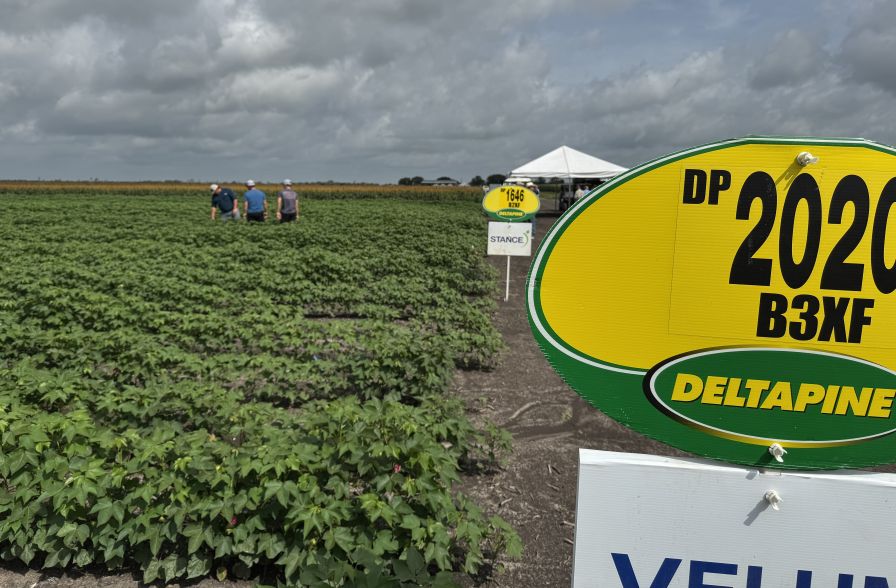New On-board, Module-building Cotton Pickers Are A Matter Of Necessity
The concept of mechanical cotton pickers goes to back to pre-Civil War days, believe it or not, but it remained only a pipedream for almost a century.
Donald Holley, a professor of history at the University of Arkansas, writes in his book “The Second Great Emancipation – The Mechanical Cotton Picker, Black Migration, and How They Shaped the Modern South,” that the first patent was issued for a mechanical picker in 1850. From there, all sorts of designs were tried – one was an attempt to separate lint from bolls with air blasts; another used static electricity. They were probably good ideas at the time, but that’s all they were – ideas – and weren’t even remotely successful.
In 1936, John Rush field tested a picker he designed and built at what was then the Delta Experiment Station (now the Delta Research and Extension Center) in Stoneville, MS. Based on the trial, Rush was given credit for the first successful mechanical picker. He believed a single picker would replace 50-100 manual laborers, but that was not met with the fanfare and fireworks you would expect today – far from it, in fact. Holley writes that at that the time, it was feared mechanical pickers would send millions to the unemployment lines.
In 1942, Fowler McCormick, chairman of the board of International Harvester, announced that his company had a perfected mechanical spindle picker ready for production. And in 1943 on Hopson Plantation near Clarksdale, MS, he proved it.
To say the rest is history is somewhat of an understatement. The economics of the original pickers and today’s on-board, module-building pickers are poles apart. The labor that was plentiful when the first pickers hit the field is now critically short, and the new pickers were born as a matter of necessity.
The Case IH Module Express 625 was unveiled on the Kenneth Hood farm near Gunnison, MS, during harvest of 2006. The Deere 7760 Self-Propelled Cotton Picker made its public debut this fall.
“We used to run 12 cotton pickers with 12 drivers. We had 12 module builders, with 12 tractors hooked to them, with 12 drivers,” Hood said. “We had a Mule Boy (boll buggy) for each picker – so that was 12 more pieces of equipment, with 12 tractors hooked to them, and 12 more drivers.”
“To run those 12 pickers that I use 45-60 days a year takes 36 people, 24 tractors and 24 other pieces of equipment,” he continued. “With that much, I’m supposed to go broke. An on-board, module-building picker will replace a lot of that.”
Hood began experimenting with on-the-go module-building in 1996, using a modified Hesston Stack Hand hay compacter. The Stack Hand hydraulically lowers its roof onto cut hay, compressing the hay into round or rectangular modules. A decade later, ironically, the Case IH picker would build rectangular modules, and the Deere picker would create round ones.
“I asked myself why couldn’t this be done with a picker,” Hood continued. “I had some ideas, Jimmy Hargett had some ideas, and Case had some ideas. We put them all together and here we are today.”
Hargett, of Bells, TN, added that day, “I talked to someone running four 6-row (conventional) pickers with 20 people and 8 tractors. I have four new (module-building pickers) running with 4 people and a pickup truck.
“It’s the future,” he added. “Not doubt about it. The basket picker will become obsolete.”
Mike Henson, who farms near Lubbock, TX, used the new Deere picker this fall and it was love at first site. “I had been hearing about it for some time and I saw the first one in August,” he said. By mid-November, he had his hands on one. “It’s excellent. I love it,” he added. “It’s the thing of the future. It is going to help us keep costs down. Absolutely, it sure will.”
Captions:
Jimmy Hargett sketched his idea for a module-building picker on the concrete floor of a farm building. When he moved to another building, he ripped up his drawing and took it with him.
The first production-model mechanical cotton picker made its debut in 1943 at Hopson Plantation, near Clarksdale, MS.
Kenneth Hood
Mike Henson
The Case IH Module Express 625.
Half-modules.
Half-modules move into the gin the same way as conventional
modules.
The Stover Unwrapper Gin Improvement System will automatically lift, cut and rotate round modules as they move toward the module feeder.









